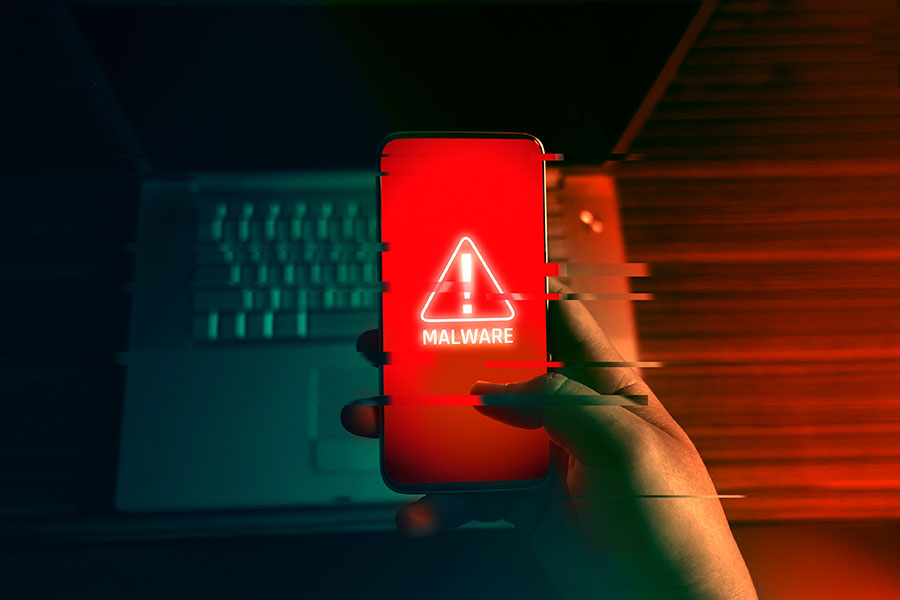Zero-Day Attacks
Zero-Day is a virtual attack that occurs when a software vulnerability is discovered and exploited before the vendor releases a patch. Initially, when a user discovers a security risk in a program, they can report that risk to the software company, which will develop a security patch to fix the flaw.
The same user can also alert others on the Internet about the flaw, if it is ethical, only after the vendor of the program with the flaw generates the fix. These vendors create a fix quickly to ensure the protection of the programs. But sometimes, hackers find out about the flaw first and are quick to exploit it. When this happens, it is very difficult to prevent an attack, since the software flaw is new.
Malwares
The term malware or Malicious software is a program intended to infiltrate someone else’s computer illicitly, with the intention of causing some damage or theft of information. Computer viruses, worms, Trojan horses, and spywares are considered malware.
Cyber Extortions
Cyber extortion is nothing more than the cybercriminal using threats to demand money from victims instead of stealing it directly. Although it is a highly discussed topic, this type of cyber attack continues to gain strength, forming a true criminal industry.
Already in 2017, private organizations along with governments around the world did not escape its path, with globally known ransomware attacks such as WannaCry and Petya.
Ransomware is a type of malware that hijacks the victim’s computer and charges an amount of money for the ransom, usually using the virtual currency bitcoin, making it difficult to track the cybercriminal. This type of virus acts by encoding the operating system’s data so that the user no longer has access to their information until they enter the key that allows the decryption of the information that was encrypted by the ransomware.
DDoS Attacks
A DDoS attack aims to make a server, service, or infrastructure unavailable. The attack can take various forms: an overload of the server’s bandwidth to make it unavailable or a depletion of the system’s resources of the machine, preventing it from responding to legitimate traffic. The result is similar to the famous HTTP 500 error that appears in your browser when too many people try to buy that ticket for a long-awaited show or secure their place in the stands to watch that great game of our national team.
Phishing
Phishing (pronounced “fishing” in English) is an online fraud technique, used by computer criminals to steal bank passwords and other personal information, using them fraudulently.
A phishing attempt can happen through fake websites or emails that clone the image of a famous and trustworthy company to attract the attention of victims. Normally, the contents of phishing sites or emails promise fabulous promotions or request users to update their bank details, avoiding the cancellation of their account in a service, for example.
DNS Cache Poisoning
DNS cache poisoning is the compromise in the security or integrity of the data in a Domain Name System (DNS).
This problem occurs when the data introduced in the cache of a name server does not originate from the real authoritative DNS name server. This problem can be an attempt at a malicious attack on a name server, but it can also be the result of an unintentional configuration error in the DNS server cache.
Suppose you want to access the internet address SEUBANCO.COM.BR at your home. The DNS of your internet modem will translate this address into an IP number, a number used in the network to locate and direct your request to the destination server.
If the DNS server of your modem is not reliable, it may direct your request to a fake server, giving the false impression that you are really on the page you wanted to access, however, informing your personal data to the cybercriminal’s server.
Cryptojacking
Cryptojacking is an online threat that hides in a computer or mobile device and uses the machine’s resources to “mine” forms of online money known as cryptocurrency. It is a growing threat that can take over Internet browsers and affects all types of devices, from desktops and laptops to smartphones and even network servers.
By installing a program or accessing a site infected by this type of malicious code, your computer will work for the cybercriminal, stealing processing cycles, memory, and electrical energy from the victim, in exchange for the malicious mining of cryptocurrency without the user noticing. Your computer will become slower, but it does not affect the functioning or theft of data itself.
These attacks make the demand for security professionals grow
In the face of the described attacks, increasingly well-orchestrated by criminals, it is clear that a data protection law can only be implemented by highly qualified professionals.
If you are an IT professional and are thinking of entering the area of penetration tests, forensics, incident response, malware analysis, and security risk mitigation and still have doubts if this area is promising, I have a message for you: Prepare for an avalanche of requests for intrusion tests, forensic reports, and technical opinions in the area of





